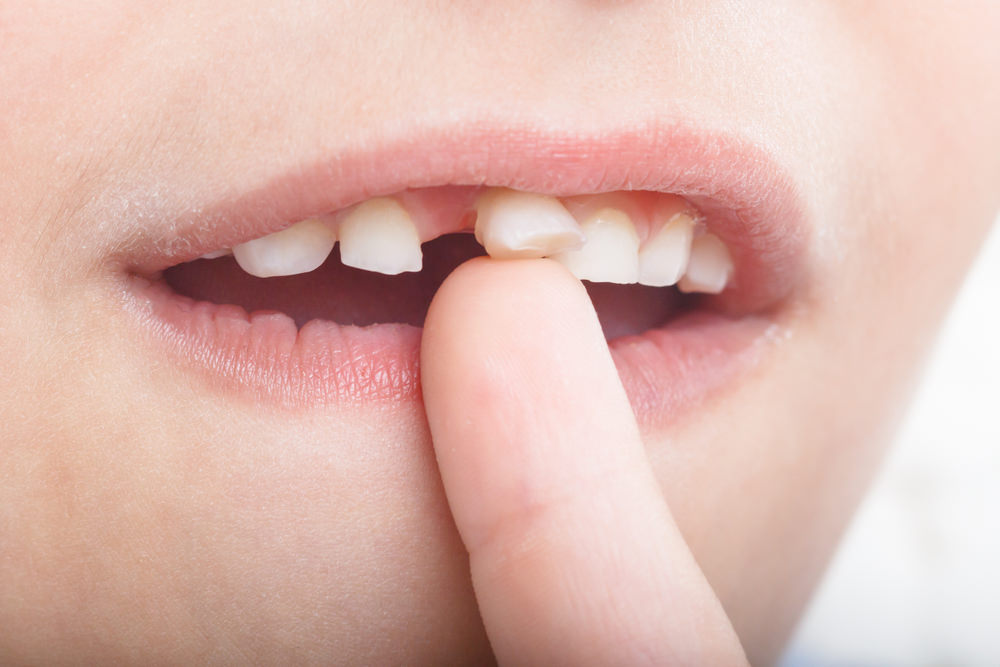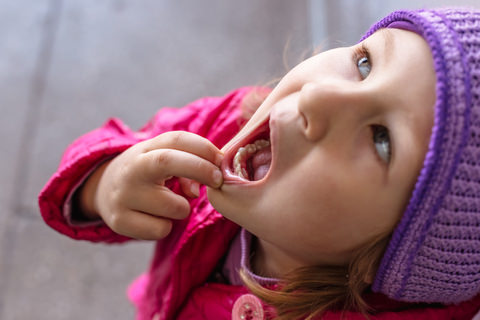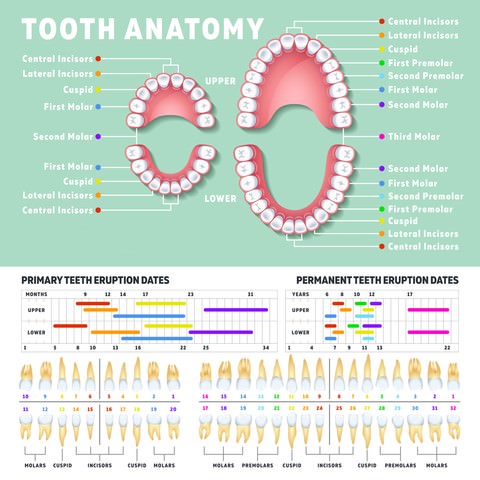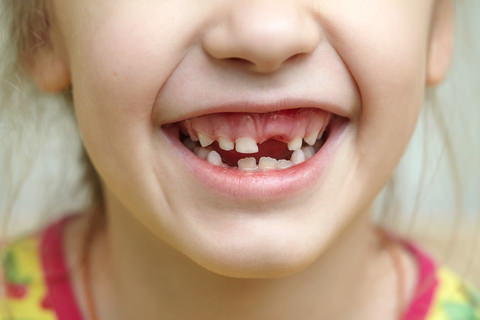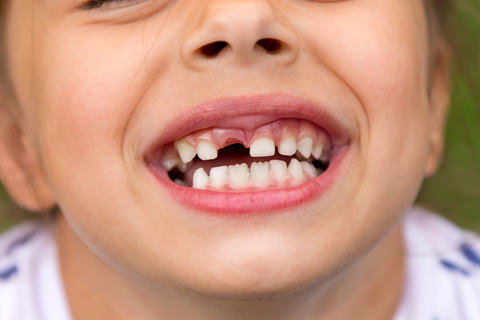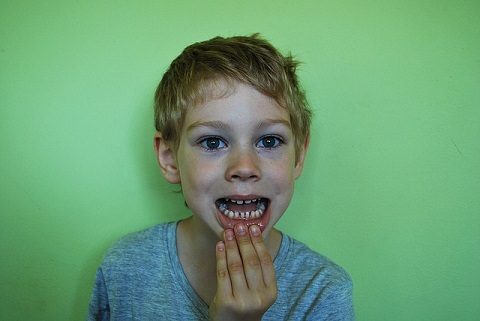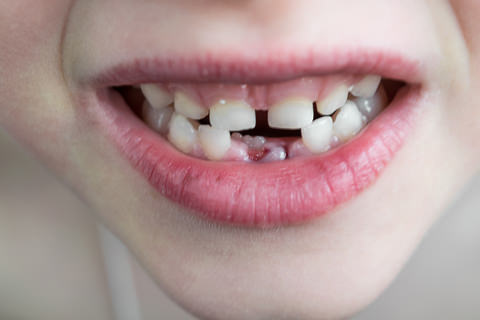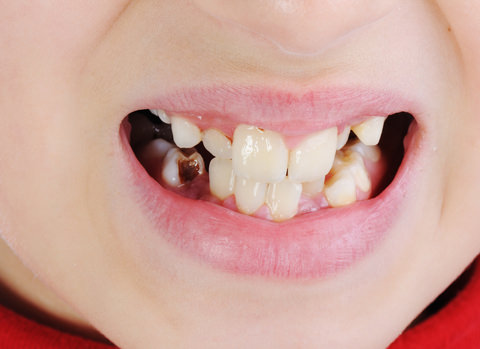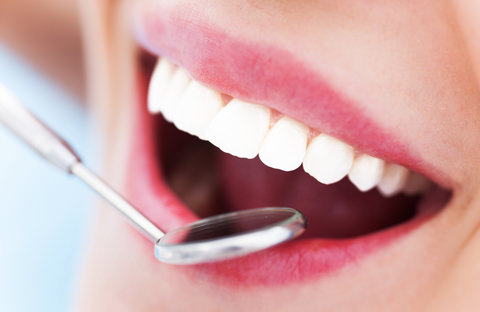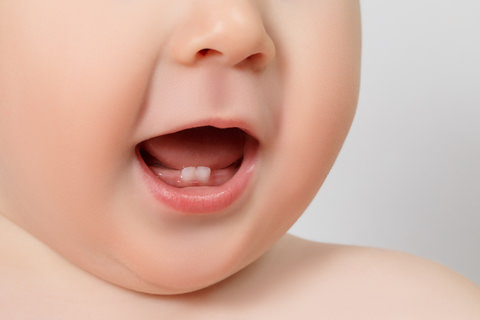What to Do When Your Child Has a Loose Tooth
Loose teeth are a part of a child’s changing body – as they mature through the years, so do their teeth.
There are multiple causes due to which baby teeth loosen in a child’s mouth and although they eventually fall out naturally, exceptions exist, and parents need to be wary of a few things.
While pulling out loose teeth remains a common option, experts do not advise it.
This article will provide you with an in-depth analysis of what to do when your child has a loose tooth.
Why does a Child Experience Loose Teeth?
A loose tooth is basically a tooth with dissolving roots, soon to be broken off.
The baby teeth fall out naturally, without inflicting any pain on the child.
While this is a natural process, it can be amusing for the child (because of Tooth Fairy) and worrisome for the parents.
Why Does it Happen?
A child has a loose tooth when the primary teeth (also referred to as ‘baby teeth’) are making way for an adult tooth.
When an adult tooth moves up the jaw, it causes the baby tooth to fall out.
The baby teeth serve essential functions such as promoting proper chewing habits and helping with speech development.
More importantly, they hold adequate space for permanent teeth.
By the time your child is three years old, she will ideally possess a full set of 20 primary teeth, before the permanent, or ‘adult’ teeth grow.
How Does it Happen?
Most of the children experience loosening of the teeth around the age of six years, and the process continues for as long as fourteen years of age.
In the overwhelming majority of the cases, the tooth is loosened due to osteoclasts (a type of bone cell) naturally breaking the root apart to pave the way for the adult or permanent tooth.
However, teeth may also be loosened in the case of a child falling or experiencing a blow.
In such a situation, it is advised to visit a dental hygiene expert or dentist.
When Does it Happen?
The majority of the kids start experiencing loosening of their teeth around the age of six, but it can start from as early as the age of four for some children.
While wiggly tooth early on is rare, they are not exceptional and nothing to worry about.
Generally, the sooner a child grows a set of baby teeth, the quicker these baby teeth fall out.
The onset of loosening teeth may not come until seven years of age, but it is advised to seek expert advice in case of such an anomaly.
Extra teeth in the supporting jaw bone may prevent the permanent teeth from pushing the baby teeth out.
The first teeth that usually become loose and eventually fall are the bottom two located at the very front.
They are followed by the top two front teeth (the central incisors), then the next two on either side of the bottom jaw.
The two on either side of the top jaw (lateral incisors) fall last to complete the cycle.
What to Do When a Child Has a Loose Tooth?
A loose tooth is a natural phenomenon, and should not be worried about too much.
It is part of a natural process of growth – one that will continue until the wisdom teeth grow between the ages of 17 – 21 years old.
However, there are a few things parents need to be wary of.
Loose Tooth May Be Stubborn
The roots are the component that holds the teeth firm and set against the jaw.
Dissolving the roots may be a time-consuming process.
The loose tooth may take a while to fall out of the socket entirely and remain wiggly for a while.
The wiggly teeth remain there for a few days to a maximum of a few weeks – and is not a cause for concern.
Instead, the child should be encouraged to play with loose teeth.
Contact with tongue and food has proven to be effective in getting rid of a loose tooth.
Making your child bite down an apple often results in the loose tooth coming out engraved in the apple.
Trying to rip loose teeth out may prove painful and lead to complications, much to the dismay of many parents.
Many experts have denounced the tying-a-string-to-a-doorknob strategy, and they have agreed to let nature take its course.
But if you are interested in how it can play out, check out the below video of a brave little girl and her father attempting to remove her loose tooth.
Bleeding is Normal
A loose tooth is only stuck to the socket and may be attached to a few roots left to be dissolved entirely.
When a loose tooth falls naturally, it results in a little bit of blood seeping through the dead roots or socket.
Usually rinsing the mouth with clean water does the trick when the tooth falls naturally.
However, in the case of forcing your way through a fallen tooth, bleeding may be significantly more and require medical attention.
Sockets Maybe Sore
Empty sockets and loosened teeth can sometimes lead to soreness of the affected area.
This may be due to various reasons which include damaged roots.
Such soreness is completely normal in the case of a loose tooth.
Your child may suffer a slight pain or stinging feeling when touching the loose tooth, which is a symptom of undissolved roots.
If the soreness persists and affects your child, it is advised to numb the affected area using a numbing agent such as an ice pack or a bag of peas.
Numbing the area relieves the child of the stinging pain.
Instead of ice packs, an over-the-counter medication may also prove beneficial in reducing the soreness of the area surrounding the loose tooth.
Examples of such medication include Children’s paracetamol.
However, it is important to note that only a small amount is safe to administer and you must make sure the dosage is within limits of the manufacturer’s recommendations.
Oral Hygiene Maintenance
Conventional wisdom stops children from brushing and flossing their teeth when a loose tooth falls out.
Although brushing and flossing after you’ve lost a tooth may look funny for children, it’s crucial that they continue to do so.
An empty socket can be home to many infections and bacterial attacks.
Such infections can lead to tooth decay and gum deterioration.
Additionally, the plaque also keeps building up from any food residue left in your child’s mouth.
This makes maintaining a good oral hygiene routine all the more important.
By the time your child is preparing for her adult teeth, they have matured enough to brush by themselves.
Focusing on brushing along the gum line can also aid in the loose teeth falling off naturally.
After the loose teeth have fallen off, proper oral hygiene maintenance acts as a necessary protection for the empty socket.
The Australian Dental Association recommends using a fluoride toothpaste for kids and advises parents or guardians to supervise their brushing routine.
Kids should brush for at least sixty seconds in a manner that covers their entire teeth.
The ADA also recommends the amount that should be used.
A thin smear for a kid who is two years old or younger and a pea-sized dot for kids who age two years and older.
Is it Safe to Pull Out Loose Teeth?
Despite many parents have tried various ways and conventional wisdom dictating it is safe, it is not.
At least not entirely.
Pulling loose teeth out of the socket can be painful, as opposed to when it falls naturally.
Therefore, it is recommended that teeth should be pulled only when the roots have been completely dissolved.
Here’s a list of symptoms that indicate when not to pull your child’s loose tooth:
- When it is only slightly loose. Teeth that are only slightly loose are still rooted firmly in the tooth socket.
- Your child tells you it hurts every time the loose tooth is touched or pulled.
- It’s obvious that pulling the teeth will damage the other teeth around the loose tooth.
- When you are yet to speak to your dentist. Dental hygiene experts and dentists provide the expertise that parents may lack.
How to Pull a Loose Tooth
A loose tooth left on its own is perfectly fine.
When a loose tooth falls on its own it will give way to the adult teeth coming through.
However, sometimes a loose tooth does not fall on its own despite the roots being dissolved and parents will look to remove the loose tooth on their own.
After seeking help from your dentist first, you can pull out your child’s loose tooth on your own.
Here are a few things you need to keep in mind before you pull out the loose tooth.
Tips When Pulling Out Baby Teeth
- Wash your hands thoroughly with anti-bacterial hand wash – A child’s mouth is a sensitive place and all the bacteria you leave behind can find a way to their stomach.
- Make your child open their mouth as wide as possible – You need to observe the loose tooth before plucking it off.
- Calm your child down – It is normal for children to panic at the prospect of having their teeth plucked. A potential visit from the tooth fairy is a tried and tested fear reliever!
- Use a clean gauze pad – Hold the teeth and gently pull the teeth out with your fingers.
- Have the child lean forward to avoid swallowing any blood – Bleeding is typical when a loose tooth is pulled.
- Use a new gauze pad – Apply gentle pressure on the gum area until bleeding stops.
- Bleeding – It may continue for a few minutes. Do not panic.
- Have your child’s mouth rinsed with warm water – This should stop the bleeding and provide much-needed relief to your child.
- If the bleeding persists for fifteen minutes or more – Seek professional help from a dentist or a dental hygiene expert.
After removing the tooth, check the socket and surrounding area to ensure no tooth fragments remain behind in the mouth.
A pulled out tooth is prone to fragments being left behind, and you should visit your dentist soon in such a case.
What to Do With the New Teeth?
The process of growing teeth starts from infancy and lasts all the way into adulthood.
Wisdom teeth grow and start erupting around seventeen to twenty years of age.
After baby teeth fall out after loosening up, they give way to stronger and firmly rooted adult teeth.
Sometimes, premature adult teeth grow before baby teeth fall entirely – leading to two rows of teeth.
This condition is also known as ‘shark teeth.’
In the period leading to the growth of the adult teeth, it may be the case that your child experiences itching or irritation around the gums.
It is a sign of upcoming teeth.
Soreness or Pain
The newly grown teeth may also cause mild soreness at the back of the mouth.
Soreness at the back of the mouth is predominantly caused by the growth of the first permanent molars.
Permanent molars grow around the age of five to six years old and do not form a part of the baby teeth.
To provide relief for the soreness, parents may use Ibuprofen or Paracetamol for reducing the pain and easing the ache.
However, such medication only offers temporary relief.
The new adult teeth are bigger in size and stronger in strength.
Furthermore, adult teeth are also less likely to be as white as baby teeth; their harder texture does not shine as bright as that of the baby teeth.
Adult teeth also referred to as permanent teeth, are the last set of teeth we grow and are irreplaceable and thus require proper care.
Conclusion
A child’s loose tooth is a sign of growth and health.
Most of the time loose teeth will fall naturally but they may need some help if stubborn.
It’s recommended to visit your friendly dentist if you feel your child’s tooth is becoming loose.
Even if you are keen to give it a pull yourself, it’s worthwhile getting the advice from an expert before doing so.
Finally, during this period of change for your child, I would encourage continuing good dental hygiene.
A soft toothbrush and consistency are a winning combo.
Stay happy and healthy!
Have you ever pulled your child’s loose tooth? How did you do it?
By Dr. V
Created at September 25, 2018, Updated at January 25, 2025


